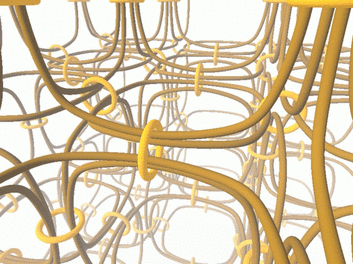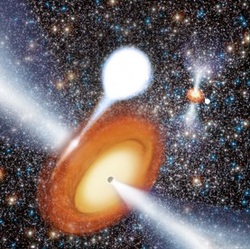 by Rahul Jayaraman Given the exciting news about our very own Prof J. Michael Kosterliz winning the 2016 Nobel Prize in Physics for “theoretical discoveries of topological phase transitions and topological phases of matter,” it seems useful to discuss why exactly his research is relevant. At first read , the description of his research can seem awfully esoteric; however, upon closer inspection, Prof. Kosterlitz’s research proves to have graspable implications for the world around us. Prof. Kosterlitz’s research focused on phase transitions of these exotic materials, which can be illustrated with a simple analogy – for instance, graphite turning to diamond is a “phase transition,” and graphite and diamond are “phases.” While previous work focused on simply studying analogues to graphite and diamond, Prof. Kosterlitz studied the analogous transition between exotic states of matter.
0 Comments
By Misbah Noorani '17 Here at Brown, “consciousness” is an oft-touted concept. It's ontologized by philosophers, attempted by artificial intelligence researchers, black-boxed by cognitive scientists, and reduced to its neural correlates by neuroscientists. Step into the physics department, though, and you won’t hear a whisper of the Hard Problem; at least, not in the bubble of academia. Now try typing “consciousness” into your Google or YouTube search bar, and it’s a different story entirely.
by Sarah Blunt '17  Artist’s depiction of a black hole interacting gravitationally with a nearby star and emitting jets of x-ray radiation. [image via] Artist’s depiction of a black hole interacting gravitationally with a nearby star and emitting jets of x-ray radiation. [image via] Have you ever wondered what a black hole looks like? Do you imagine an insatiable dark pit traveling through space, devouring everything in its path? Or do you imagine a tear in the fabric of space and time, replete with wormholes to other universes and the lifeless bodies of intrepid astronauts? Fueled in part by imaginative portrayals such as these, black holes have become a favorite astronomical conversation topic. The phrase “so massive that not even light can escape” has captured the imaginations of middle schoolers and professors alike, and scientists are anxious to find out more about these invisible gravitational behemoths. by Nari Lee '17 Have you ever wondered why you can’t pull off those triple axels just like they do in the Winter Olympics? Well, as it turns out, three of the most popular winter sports—ice hockey, figure skating, and speed skating—are dependent on ice skates, and the athletes in each category need skates that fit their individual needs.  Several athletic wear brands have such technology Several athletic wear brands have such technologyin their sports bras these days. [image via] Take ice hockey, for example. Players need skates that can endure up to twenty minutes of high intensity, high velocity play, while allowing for agility on the ice. Thus the boot of an Olympic hockey player is crafted from synthetic materials that form to his feet when heated. The molded fit helps reduce energy wasted from the foot moving around inside of the boot and instead applies that energy towards forward motion. The blades under the hockey player’s boots, though built of the same highest quality steel, are shorter and lighter than other blades. This adaptation allows for both speed and quick stops or turns. |

